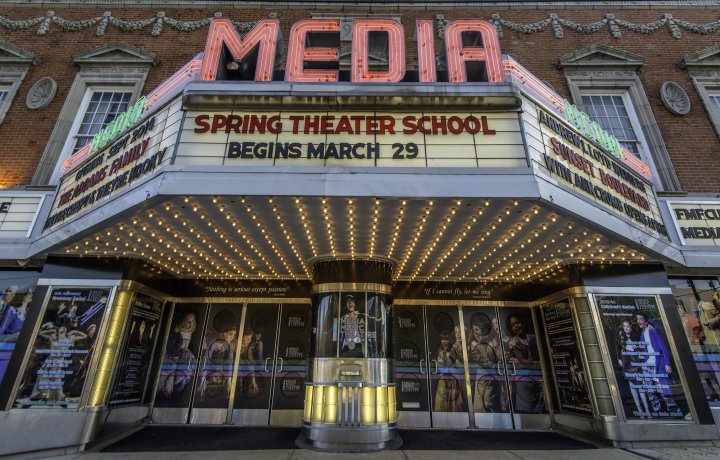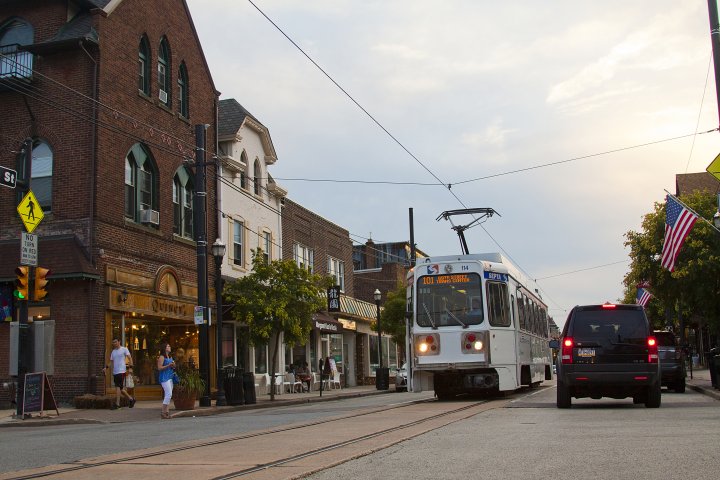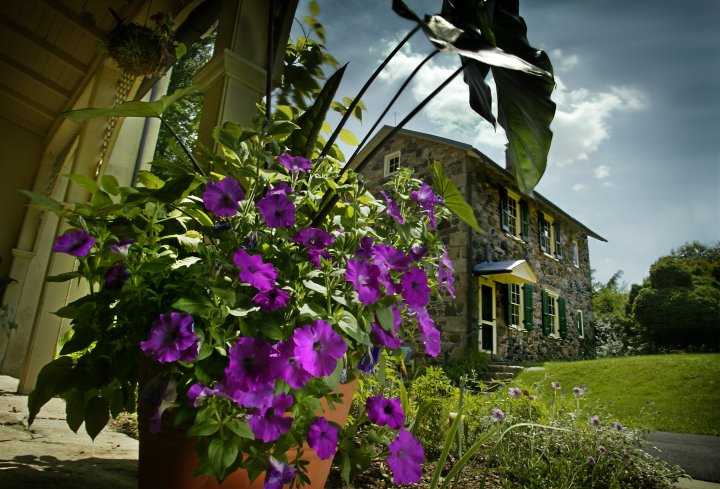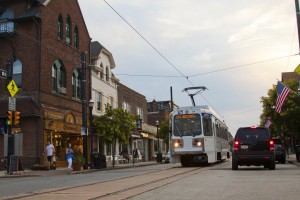Media, Pennsylvania
By Jodine Mayberry | County Seat
Essay
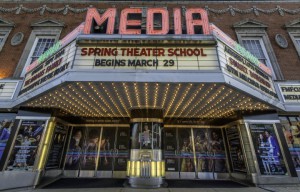
Media, Pennsylvania, was built on farmland in the 1850s as the new county seat of Delaware County. The county, which was carved from Chester County in 1789, lies in the southeastern corner of the state along the Delaware River between Philadelphia and the state of Delaware. Located only 12 miles from Philadelphia, Media is an early example of a “planned community,” intended as both a commercial center and a place to conduct court and county government business. For many decades, it was an important stop along rail and highway routes between Philadelphia, Baltimore, and Washington, D.C.
Media started out as a small village named Providence, settled by Quakers in 1682. The Quakers, or Society of Friends, who came to America with William Penn, settled along the Delaware River establishing meetinghouses throughout Philadelphia and its suburbs. Penn granted Media’s first English settlers, brothers Peter and William Taylor, 700 acres and Thomas Minshall, 625 acres in and near Media. Minshall allowed his neighbors to hold Friends meetings in his house in the 1680s. He then donated a tract of land on his farm for a meeting place. The Providence Friends Meeting’s first log meetinghouse was completed in 1700 and was replaced with the current stone building in 1814.
Providence remained a small village of about a dozen buildings surrounded by farmland until 1850. Ridley Creek and Crum Creek flowed on the east and west of the town to create a landscape of hills and valleys and to provide fresh water and fish to local residents. In the eighteenth, nineteenth, and early twentieth centuries, many textile, lumber, and grain mills operated along their banks.
In 1683, the county government chartered the “Providence Great Road” to enable local farmers to move their crops to market from the west to the county seat in Chester. There, their produce could be shipped on the Delaware River.
Allure of the County Seat
When the eastern half of Chester County split off in 1789 to create Delaware County, keeping the city of Chester as the county seat, the arrangement failed to satisfy citizens of the area’s outlying precincts, who came to be known as “removalists.” They had to carry their goods to market on packhorses along narrow paths or on carts along deeply rutted tracks and they considered the journey to Chester City too long and arduous. Radnor Township, which was closer to Norristown, the county seat of Montgomery County, threatened to secede from Delaware County if the county seat was not relocated. Chester merchants and residents resisted, however, because they feared losing their livelihoods if county government relocated.
The issue went unresolved for decades until the municipalities of Delaware County called a meeting at the Black Horse Tavern in Middletown in early December 1845 to vote on a location for a new county seat. Although many delegates could not get there because of the wretched roads, the delegates who attended chose Providence, five miles inland from Chester City, where the county already had a poorhouse and farm called “the House of Employment.” The Pennsylvania Legislature passed a bill in 1848 allowing the Delaware County commissioners to establish the new county seat at Providence. Minshall Painter (1801-73), a descendant of Thomas Minshall, suggested that the town be renamed Media as it was located in the center of the county.
The county commissioners purchased a 48-acre tract of farmland and sold 200 building lots in and around Providence, reserving a large tract in the center for the new county buildings. Several doctors, judges, and attorneys were among the first buyers. Many property owners along the Delaware River sold their land and built in Media, freeing the riverfront for later development as a shipbuilding and industrial center. By 1853, the town consisted of more than 70 stores, banks, office buildings, churches, and homes. A major fire destroyed a shingle factory in the early 1850s, and Media passed an ordinance banning construction of wood-frame buildings as a fire precaution. Thereafter, stores, law offices, government buildings, and homes were built of brick. The Media Borough Council built the Media Water Works on Ridley Creek in 1855 to supply the new town with clean water. Three newspapers were published in Media in the 1890s: the Delaware County American, the Delaware County Record, and the Media Ledger. In 1891 the town formed its first volunteer fire department, the Media Fire and Hook and Ladder Co. No. 1, which still serves the community and is still an all-volunteer company.
Although the name Providence was lost, the surrounding townships of Upper and Nether Providence remained. The new county courthouse, jail, and sheriff’s house were completed in 1851 and the first court session took place Aug. 25. By 1870, the county commissioners had to add wings on each side of the original courthouse because the county, and with it county government, had grown so rapidly. By 1910 the population of Media had reached 3,562.
A Dry Town from the Beginning
A clause in the bill creating Media decreed that no alcohol could be sold in the town, and from its founding until the repeal of Prohibition, Media remained a dry town, a testament to its strong Quaker roots. In the second half of the nineteenth century, Media featured a temperance hotel called the Charter House for travelers. Despite its “dryness,” Media became a popular summer resort for well-to-do Philadelphians in the late 1800s with several large hotels.
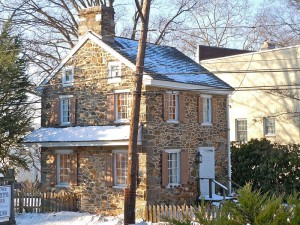
Media was a crossroads for travelers going from Philadelphia south or coming from the western counties to Chester, which had remained a major market city. From colonial times, taverns and inns on the outskirts of Media served travelers by horse and stagecoach. The roads to towns such as Newtown Square and Radnor, on the western edges of the county, gradually began to be improved in the nineteenth century.
With the advent of automobiles, Providence Road was paved and designated as State Rte. 252. Another early road, Baltimore Pike, extended through Media, crossing Providence Road on its way from Philadelphia to Baltimore, Maryland. South of Media the pike eventually became part of U.S. Route 1, a highway that today extends from Maine to Florida. Construction on the Baltimore Pike began around 1811 to carry stagecoach traffic. Like Baltimore Pike, two other early roads originating in Philadelphia and running through Delaware County, Lancaster Pike and West Chester Pike, were named for their destinations. All three remain important roadways, carrying commuters between Philadelphia and its southern and western suburbs. Dozens of towns sprang up along their paths in the nineteenth century.
In 1854, the Philadelphia-Baltimore-Washington rail line was completed through Media. The railroad later became the Southeast Pennsylvania Transportation Authority (SEPTA) Media/Elwyn commuter line, running from Elwyn, on Media’s western edge, to Suburban Station in Philadelphia, making Media a suburb of Philadelphia. Trolley service began in 1913 to the 69th Street terminal in Upper Darby, a transportation hub serving Philadelphia and Chester and Delaware Counties. The 101 trolley still runs down the middle of State Street in Media on its way to Upper Darby.
Underground Railroad
Before the Civil War, abolitionists and Underground Railroad conductors who resided in Wilmington, Delaware, 15 miles southwest of Media, directed escaped slaves along three routes through Delaware and Chester Counties north to Philadelphia, a major center of Quaker abolitionist activity. The middle route went through Media and some former slaves and freedmen settled along the route in Middletown. In the early 1850s the county relocated the almshouse to Middletown and sold the Media property. The new owner converted the building to a lodging house for Black families, making Media an integrated community almost from the start. Many local residents in Media, as well as Delaware County, fought for the Union in the Civil War.
Media’s Quaker community helped run the Underground Railroad and later played a major role in peacefully integrating the town’s schools and public services. In January 1937 in the middle of the school year, Dorothy Biddle James (1900-85), then chair of the Media Friends School admission committee, enrolled the first African American student, causing an uproar among unprepared parents as both public and private schools were then segregated by race. One-third of the students left the following school year and the school nearly closed, but its administrators persevered with their experiment in integration, establishing a model for later school integration in Media and Delaware County.
James played another significant role in Media history when, in 1944, she was having lunch at a new restaurant in Media. She noticed that two Black women were refused service and followed them out. The women had lunch at a nearby drugstore and planned the formation of the Media Interracial Fellowship House, a safe place for Blacks and whites to come together in community activities and work for civil rights. The Media Fellowship House, located at 302 S. Jackson Street, continues to serve as a vibrant center for the community, hosting a wide variety of programs, events, speakers, and organizations.
Local African American citizens formed the Media Branch of the National Association for the Advancement of Colored People in the 1930s. The branch was very active during the 1960s civil rights struggle, along with the Philadelphia and Chester branches.
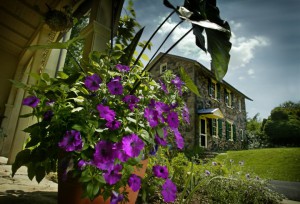
Many Delaware County Quakers and other religious and peace groups, as well as college students from Quaker-founded Swarthmore and Haverford Colleges, opposed the Vietnam War, and many demonstrators showed up at the courthouse in Media week after week to stage silent protests. In 1971, a group organized by a Haverford College professor and calling itself the Citizens’ Committee to Investigate the FBI broke into a two-man FBI office in the town and stole more than 1,000 classified documents. The documents, published in 1972, revealed that the FBI had been running a clandestine political surveillance operation on U.S. citizens, known as COINTELPRO (counter-intelligence program). A U.S. Senate committee, the Church Committee, investigated and the program ended. The eight members of the group were not identified until 2014 when four of them agreed to be interviewed for a book and documentary film.
Media’s downtown business and shopping district was hard hit in 1974 when two large, modern, covered shopping malls opened on each side of the borough. The town’s business association then reinvented State Street, the main street, as a lively mix of restaurants, bars, gift shops, and crafts stores. State Street is often closed off in the summer as Media hosts arts and crafts shows, flea markets, produce markets, and open-air dining on Wednesday nights.
Incorporated at only 0.8 square miles in size, the borough’s geographic boundaries have never grown. With a population of 5,327 in 2010, Media was 77.7 percent white, 13.2 percent Black, and 9 percent Asian, Latino, and other or mixed races. Even though it remained the county seat, Media never became a major municipality in Delaware County because of its location away from the Delaware River and its late development in comparison to other boroughs and townships in the county, most of which date from early colonial times. Its population was only 0.01 percent of the population of the entire county, which was 558,579 in 2010. Because of its status as the seat of county government, however, Media generated many jobs in the courts, law enforcement, county offices, retail establishments, and law offices and thus remained a popular destination throughout the county.
Jodine Mayberry is a retired journalist. She was a legal writer and editor for West Publications, a division of Thomson Reuters, for 18 years. (Author information current at time of publication.)
Copyright 2015, Rutgers University
